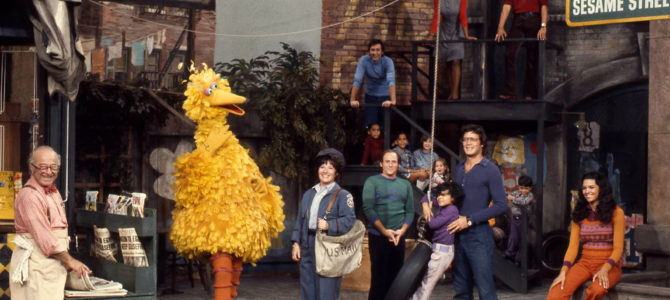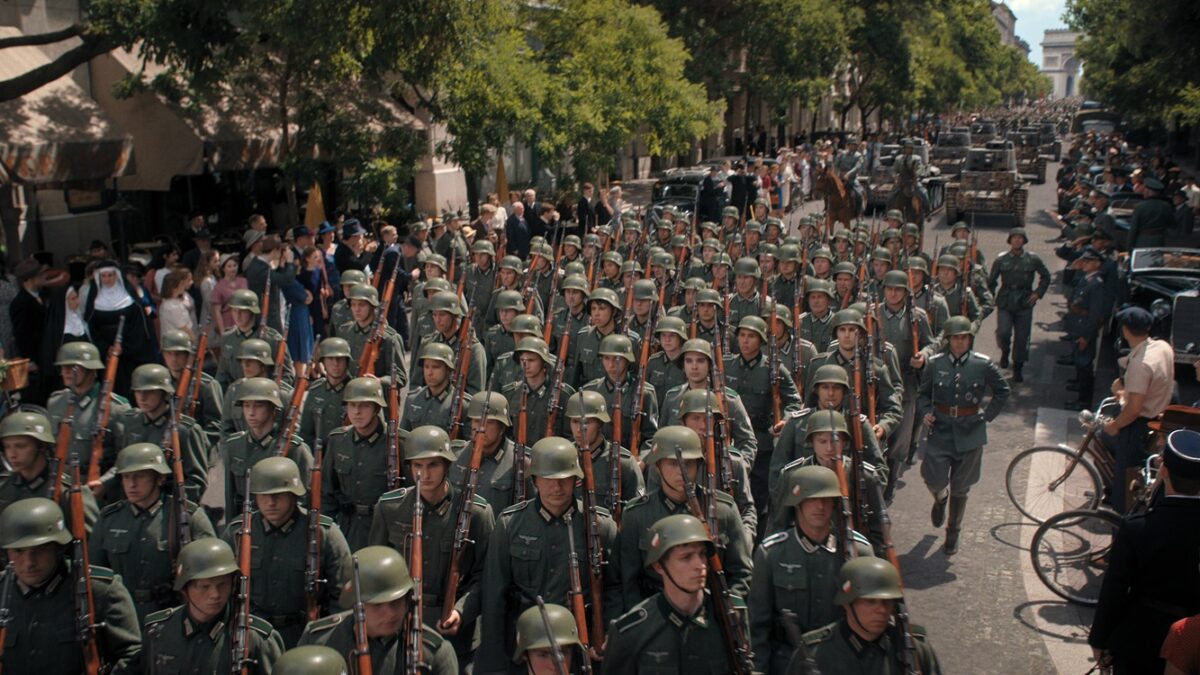
Since 1969, children’s television has undergone radical changes. Yet while the volume of educational TV programs for young ones has soared, their access to non-kid-friendly content has also increased. One constant for families has been “Sesame Street,” the colorful puppet-driven edutainment program that made Big Bird, Cookie Monster, and Oscar the Grouch household names.
Before it became a juggernaut, it had humble beginnings as chronicled in the documentary film “Street Gang: How We Got to Sesame Street,” now available via on-demand outlets. Married filmmakers Trevor and Ellen Crafts, who spoke in an interview their five-year-old daughter briefly interrupted, brought an outsider’s lens even as they worked with Sesame Workshop and The Jim Henson Company to access little-seen archive visuals.
“The show in its origins really was so revolutionary and groundbreaking,” said Trevor Crafts. “They paired educational content with Madison Avenue techniques of what kids were experiencing in television. Back then, it was something that hadn’t been done.”
But how do you show that early spirit of experimentation? Famously the most studied show in TV history, “Sesame Street” today has more than 30 international versions being produced and aired in over 150 countries. It’s hard to brush away decades of corporate PR to get to the heart of the story.
Filmmakers hit upon a gold mine when they received access to 16 hours of behind-the-scenes footage from the show’s longtime art director Victor DiNapoli. “He just wanted to show what it took for his colleagues and friends to make the show,” said Ellen Crafts. “It really captures this energy and excitement, how everyone played their part out of this sense of a larger purpose.”
In a fast-paced 107 minutes shaped by director Marilyn Agrelo (“Mad Hot Ballroom”) and the Crafts as producers, “Street Gang” explores how diverse creative talent came together to get parents talking with their kids about learning concepts.
Street-Level Experience Over Suits
Working at WGBH in Boston, Joan Ganz Cooney believed a show with clear educational goals and multiracial casting could better serve a broad audience of kids. Early research found that many, notably in underprivileged households, didn’t connect with the more gentle pacing of Fred Rogers.
Alongside educator-philanthropist Lloyd Morrisett, who lined up funding, Cooney followed a friend’s tip to meet “the most creative guy in children’s television”: Jon Stone. With his gift for reading how to reach kids, he envisioned an urban street setting, contemporary music, and short segments to keep them engaged in learning letters and numbers.
Bringing in his friend Jim Henson, with whom Stone had worked on past TV specials, formed the show’s creative triad. “Joan, Jim, and Jon, the three J’s, (led) this gang of creative rebels,” noted Ellen Crafts. Another “J” they highlight is Joe Raposo, a gifted composer who over decades wrote more than 250 “Sesame” songs, including the show’s “Sunny Days” theme song.

“Street Gang” reintroduces these figures authentically by avoiding third-party talking-head analysis. “We were really intentional about not having anyone interviewed that wasn’t a part of it at the time,” said Trevor Crafts. “You were either one of the team who created the show, or the child of somebody there and experiencing it firsthand that way.”
The doc features original interviews with Cooney (today age 91), actress Sonia Manzano, who played “Maria” for 44 years on the show, actor Roscoe Orman (“Gordon”), actor-singer Robert “Bob” McGrath, Muppet performer Fran Brill, Stone’s daughters Kate and Polly, Brian Henson, and several family members of African American writer-actor Matt Robinson.
This approach contrasts with a recent, notably low-rated TV special entitled “50 Years of Sunny Days.” Short montages of key moments were overshadowed by current-day Sesame Workshop talking heads spliced with TV host John Oliver stating “how (bleeping) brilliant” the show is. Unlike “Street Gang,” the founding trio received only brief mention.
Comedy Brings Together Parents, Kids
From its inception, research on “Sesame Street” found kids learn more when parents watch with them. “The conversations that the (parent) had with their child while the show was on and afterward really enhanced the learning,” says longtime producer Sharon Lerner in the film.
Years before they conquered prime time with “The Muppet Show,” Jim Henson and his troupe of Muppet performers honed their comic timing in Sesame sketches that advanced learning concepts. “We were all comedy freaks,” says veteran writer Christopher Cerf. “All of us loved parody and satire. We wrote something we knew we would like, that was the key. The show would not have worked if that weren’t the case.”
As educators, hippie-looking puppeteers, and Broadway songwriters made family laughter a goal, somehow it worked. “That initial group at the workshop were all very intensely aligned on comedy,” says Trevor Crafts. “When parents and kids were together (laughing), they were going to retain more information. But the creatives also used it because they wanted to do it.”
Newly unearthed blooper footage in “Street Gang” shows that, off-camera, the Muppet performers could go off-color in their jokes. Carroll Spinney, who performed Big Bird and Oscar for five decades, is heard in his final interview before his death in December 2019, including his green grouch using the word “bastard” among other lines for comic effect. Despite cameos from big-eyed puppets, parents should be aware the documentary isn’t geared to children.
Controversies and Legacy
While many families appreciate “Sesame Street,” the show has its detractors. Starting in season one, celebrity singers and actors were welcomed on the show to sing the ABCs or emphasize another lesson, an entry point into pop culture some parents find too early for toddlers.
Families seeking to inculcate religious values in their children will find that — as in most American education — secular humanism underlies many teaching philosophies. “We’re not sure what we are or what we can be,” states composer Joe Raposo in the film. “We know there’s potential and the realization to accept ourselves. That’s what ‘Sesame Street’ is about.” The show has also dealt with several controversies over its decades-long run.

Still, the universal appeal of classic “Sesame Street” seasons is how it hewed to memorization, observation, and basic learning concepts, all embodied with true ethnic diversity previously unseen on children’s TV and saturated in sharp humor. This means many involved in children’s ministry still find valuable lessons in the wildly creative show.
In December, “Street Gang” will land on streaming service HBO Max, where it will join about 150 classic episodes of the edutainment show. Documentary producers say they hope more classics release, even poking fun at a recent disclaimer that early episodes “may not suit the needs of today’s preschool child” added in some cases. “We have a five-year-old,” said Ellen Crafts. “As parents, we always find ‘Sesame Street’ wonderful to watch together with her.”
The show’s legacy will always be sparking laughter in learning, as puppeteer Jim Henson stated in an early interview about the show: “Kids love to learn, and the learning should be exciting and fun. That’s what we’re out to do.”
Rated PG for some thematic elements, language, and smoking, “Street Gang” is now available via on-demand.









